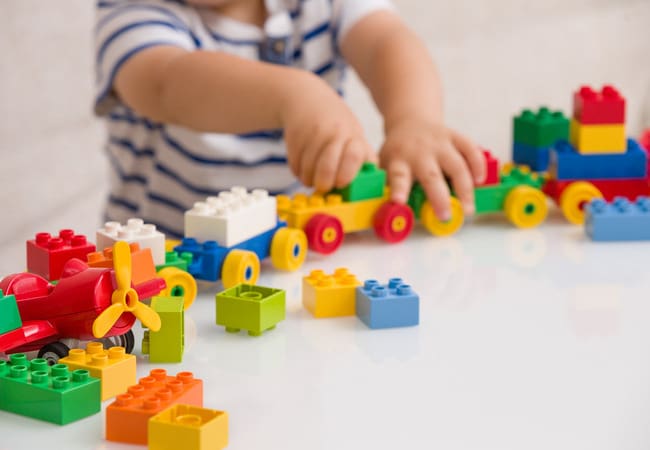LEGO has been a staple toy brand for children (and adults) all around the world for decades, so there is a lot to be studied for its success and sustainability as a brand. Their business strategy leans towards an ‘omnichannel network’, in which their offline retail presence operates in tandem with LEGO.com, which has seen huge increases in visits over recent years.
In 2022, LEGO announced a net profit of 13.8 billion Danish kroner, which is equivalent to 1.6 billion in British pounds. Join Mintel as we look a little closer and uncover how LEGO has secured its brand success, and how other retailers may learn from them.
Upgrading Their Physical Presence
LEGO stores are a great example of retail theatre with plenty of life-sized models and figurines as well as play stations. Their outlets are seen as a destination in their own right by consumers.
Throughout the COVID-19 pandemic, LEGO was one of the most significant businesses whose physical, in-store presence did not diminish but grew. Throughout a period in which many businesses worldwide were forced to close their stores, LEGO opened more than 100 new physical stores. This brings their global total to more than 800 stores around the world.
As well as continuing to push their physical presence, LEGO has put serious effort and capital into their stores. In 2022, the LEGO Store in London’s Leicester Square saw a four-month refurbishment, including an extension. The store now features 3D builds inspired by ‘Stories of Britain’, which transform a toy shop into a must-visit tourist spot. With special LEGO sets to match.
Merging Online and Offline
In terms of new product launches, in the last few years, LEGO has innovated its toys by combining online features with its traditional brick toys. The LEGO Super Mario set, released in 2020, uniquely blends physical bricks with online games and was one of LEGO’s most successful theme launches. The product line featured an interactive LEGO Mario figure that collects coins in real-life game levels created with LEGO bricks. The figure has LCD screens in its eyes, mouth and belly to display a wide range of instant reactions to movement, colour and action bricks.
Collaborating with Universal Music Group, the innovative company continued with this strategy in 2021 with the LEGO VIDIYO release – which tapped into kids’ creativity through music and play. Through LEGO VIDIYO, children can direct, produce, star in, and share their own music videos, using chart-topping tracks from Universal Music’s extensive variety of global artists. Its playful music video maker experience combines physical and digital play as special effects ‘BeatBits’ and music-inspired minifigures integrate and come to life through AR in a vibrant new app.

Targeting Adults
In the early days, LEGO was a toy designed for children. However, when those adults grew up and still enjoyed building LEGO sets, they continued to purchase and enjoy LEGO. So, with adults comprising part of LEGO’s core market, they have started to release sets designed purely for adults with a more aesthetic, home decor style. This range includes floral bouquets, Japanese gardens, famous artworks, technology, and global landmarks.
Also aiming at adults, LEGO released its second 2D tile building theme, LEGO Arts, in 2020 featuring Andy Warhol’s Marilyn Monroe, The Beatles, Marvel Studios Iron Man, and Star Wars The Sith. In our most recent Traditional Toys and Games Report, there was only a 12% disparity between toys bought for children compared to toys bought for adults. This highlights that brands can connect with adults as well as children if their products are pitched correctly.
The Nostalgia Factor
According to our expert insights into toys and games, around 4 out of 5 of us like to introduce our children to toys and games we played with in our childhoods, and three-quarters of us feel a strong nostalgic attachment to these toys and games. LEGO has been a toy box mainstay for multiple generations now, meaning that it offers the nostalgia many of us are attracted to. Furthermore, almost half of Americans rate LEGO as a brand with strong appeal. With strong brand appeal along with the nostalgia factor, there is a very human element to LEGO’s success and longevity.
What’s Next For LEGO?
LEGO thrived in the pandemic, which is a feat most businesses were not able to achieve. This success in difficult conditions signals their extreme longevity and sustainability as a brand, which Mintel anticipates should continue for many more years to come. With extremely high brand recognition, nostalgia, and innovative new releases on their side, LEGO has the right tools to build something great. Their focus on online and in-person retail offerings highlights their ability to prioritise the old and the new simultaneously to secure success.
